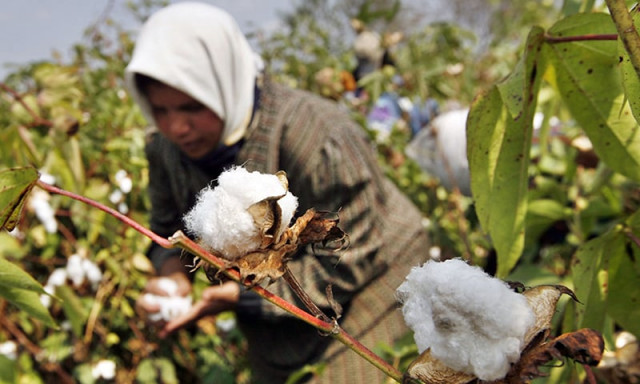Water shortage looms over Kharif crops
Water losses exceed 15-17 MAF against total storage capacity of 13 MAF

Pakistan’s water losses have exceeded its total storage capacity but a shortage of water in the early Kharif season is likely to affect a number of crops including cotton.
Pakistan manages to store just 13 million acres feet (MAF) of water while 15-17 MAF of water is lost.
Experts say loss of 1MAF of water costs $1 billion to the national economy. These losses could be reduced through efficient use of water, participants at a recent meeting of the Indus River System Authority (Irsa) were told, some official sources said.
Punjab, however, cast doubts at the reports about water loss and Irsa has formed a committee, composed of members from Punjab, Khyber-Pakhtunkhwa (K-P) and Sindh, to probe the matter.
Over the passt five years, climate change has altered the trends of water availability. Glaciers start melting late, delaying the availability of water in the rivers and affecting Kharif crops.
Kharif season starts in April and continues till September. The key crops of Kharif are rice, sugar cane, maize, maash pulse and – most importantly – cotton.
“We have seen the dangerous impact of climate change on water availability in the rivers during the last five years,” Irsa spokesperson Khalid Idrees Rana told The Express Tribune.
Temperature starts rising after April. Now water is available in the rivers in July. Therefore, the Kharif crops face grave shortages in the early season, he said.
There is another issue that will be causing water shortage during the Kharif season.
The Water and Power Development Authority (Wapda) is working on Tarbela Tunnel-5, which requires a certain level of water. Therefore, Irsa has to maintain a certain water level in Tarbela dam.
Thirdly, the country is now facing a basin problem in connection with flow of water in the rivers. Earlier, all the rivers used to flow at the same level but the situation has now changed.
It has been witnessed that when water is flowing in the River Indus and the River Kabul, the River Chenab and River Jhelum run dry.
According to Irsa, the Punjab and Sindh provinces will be facing a 27% water shortage in the current Kharif season, posing a serious threat to the Kharif crops.
The major Kharif crop is cotton, which is a raw material for the textile industry, one of the major exports of the country.
However, water shortage will reduce to 10% late in the season. The irrigation water shortage in the Indus zone will be 37% in early Kharif and 15% late in the season.
The shortage in the Jhelum-Chenab rivers will be 10% in early Kharif and negligible in the late season. In the Kharif season, the total river flows at rim stations will be around 95.32 MAF.
However, the total system losses will stand at 13.96 MAF. 70 MAF of water will be available during the Kharif season – 14.58 MAF in early Kharif and 55.42 MAF late Kharif.
However, after allowing 7.26 MAF of mandatory discharges for downstream Kotri for environmental commitments, the total water availability at canal heads for distribution among the provinces would be just 62.74 MAF.
Balochistan and the K-P will continue to be exempted from water shortage because of their infrastructure constraints.
Pakistan’s cotton production has drastically declined mainly because of farmers switching to other crops, including rice, maize, and sugarcane, as cotton planting is not profitable.
The government is concerned about the shrinking cotton-sowing area and the continuous decline in production. Cotton is a key crop in Pakistan’s agricultural economy, but production has decreased, and the planting area is shrinking.
The national food security ministry had recently informed the Economic Coordination Committee (ECC) that the production of cotton – being the key crop in the country's agricultural economy – reached a high of 14.1 million bales in the 2004-05 season.
However, in later years, its harvest averaged around 12 million bales while in the last four years, the output dropped to 7 million bales in 2020-21 and about 9.45 million bales in 2021-22.
The unprecedented floods last year significantly damaged the standing cotton crop, slashing the overall production to a mere 4.76 million bales—according to cotton arrivals till March 3, 2023—against the target of 9 million bales.



















COMMENTS
Comments are moderated and generally will be posted if they are on-topic and not abusive.
For more information, please see our Comments FAQ